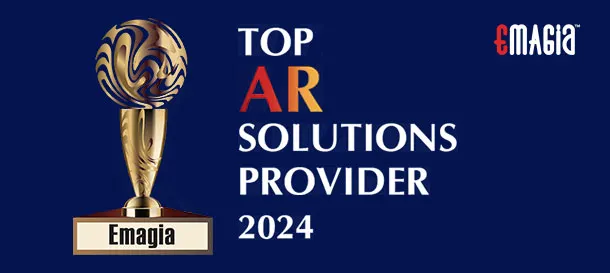In the realm of accounts receivable (AR), deductions are one of the most common yet challenging issues that businesses face. A deduction occurs when a customer reduces the amount they owe on an invoice, typically due to reasons such as billing errors, pricing discrepancies, or discounts taken without authorization. While some deductions are valid and aligned with the terms of the contract, others may be disputed or wrongly applied, leading to complexities in cash flow and revenue recognition.
Managing these deductions efficiently is critical to maintaining financial health and customer relationships. In this blog, we will explore the common challenges businesses face when dealing with deductions in AR and how Emagia, an AI-driven accounts receivable automation platform, can help optimize the process and minimize the negative impact.
What are Deductions?
In accounts receivable, deductions refer to any amount that a customer subtracts from their payment due to disagreements or issues related to the original invoice. Deductions typically fall into several categories:
1. Pricing and Billing Errors
- Customers may dispute prices, especially if they believe they were overcharged or if the agreed-upon pricing terms were not adhered to.
- Incorrect invoicing, such as missing or duplicate items, can lead to deductions.
2. Quality or Service Discrepancies
- Disputes arise when the product or service provided doesn’t meet the agreed-upon terms or quality.
- Customers may deduct a percentage of the payment to account for damages, defects, or unsatisfactory services.
3. Early Payment or Volume Discounts
Customers may apply early payment discounts or volume-based rebates without prior authorization or beyond the agreed limits.
4. Freight and Shipping Issues
Customers may claim deductions for late deliveries, damaged goods, or discrepancies in shipping costs.
5. Payment Term Conflicts
Disagreements over payment terms, such as the timing of discounts or payment due dates, can lead to deductions being applied.
6. Unauthorized Deductions
In some cases, customers may apply deductions without prior approval or legitimate reason, which can lead to disputes and complications in collection efforts.
Challenges in Managing Deductions
While deductions are a common occurrence, managing them effectively is a significant challenge. When left unaddressed, they can lead to delayed payments, strained customer relationships, and inaccurate financial reporting. Here are some of the key challenges businesses face in managing deductions:
1. Time-Consuming Manual Processes
Resolving deductions often requires a manual process of reviewing invoices, communicating with customers, and gathering documentation to verify the legitimacy of each deduction. This can be incredibly resource-intensive and slow down the entire AR process.
Impact:
- Increased administrative workload on AR teams.
- Slower resolution of disputes, leading to delays in cash flow.
- Risk of human error, such as overlooking valid deductions or misclassifying deductions.
2. Lack of Transparency and Visibility
Many businesses struggle with tracking and managing deductions across multiple customers. Without real-time visibility into the status of each deduction, it’s challenging to assess which deductions are legitimate and which require further investigation.
Impact:
- Difficulty in prioritizing which deductions need attention.
- Lack of insight into recurring deduction issues or patterns.
- Discrepancies in reporting that affect cash flow forecasting and decision-making.
3. Difficulty in Identifying Root Causes
Deductions can arise from a variety of reasons—billing errors, shipping issues, or customer-specific terms. Identifying the root cause of a deduction can be time-consuming and requires careful analysis of all relevant documentation, including contracts, purchase orders, and previous communications.
Impact:
- Inefficient resolution process due to lack of insights into the root cause.
- Potential for recurring disputes with customers over the same issue.
- Wasted time and resources on addressing issues that could be resolved proactively.
4. Managing Disputed Deductions
Not all deductions are legitimate, and many need to be disputed. This adds another layer of complexity, as businesses must engage with customers to resolve the disagreement and ensure the proper payment is received.
Impact:
- Strained customer relationships due to prolonged or unresolved disputes.
- Risk of losing customers if disputes aren’t managed professionally and promptly.
- Delay in recognizing revenue due to ongoing deduction disputes.
5. Impact on Financial Reporting
Deductions can distort a company’s financial records and revenue recognition. They can result in underreported earnings, incorrect cash flow projections, and financial discrepancies.
Impact:
- Inaccurate financial statements leading to poor decision-making.
- Discrepancies between the expected revenue and actual cash receipts.
- Difficulty in forecasting cash flow and future revenue, especially when deductions are not tracked efficiently.
6. Challenges with Customer Communication
When it comes to deductions, clear and timely communication with customers is essential. However, managing communication across multiple touchpoints and customers manually can be overwhelming and inefficient.
Impact:
- Poor customer communication can lead to misunderstandings and delays in resolving disputes.
- Delayed responses or lack of clarity can damage customer relationships.
- Difficulty in ensuring consistent communication across various customer profiles.
How Emagia Helps Optimize Deduction Management
Emagia offers a comprehensive solution for automating and streamlining deduction management in accounts receivable. Using AI-powered digital receivables automation, and real-time analytics, Emagia helps businesses overcome the challenges associated with managing deductions, improving cash flow, and enhancing customer relationships.
1. Automated Deduction Detection and Classification
Emagia’s platform automatically detects deductions as soon as they are applied, classifying them according to the reason for the deduction—whether it’s a pricing issue, quality discrepancy, or unauthorized discount. This reduces the time spent manually tracking and categorizing each deduction.
How it Helps:
- Faster detection: Automated deduction identification ensures no deduction goes unnoticed.
- Better categorization: Deductions are automatically categorized based on predefined rules, allowing AR teams to prioritize resolution efforts effectively.
2. Real-Time Visibility into Deductions
With Emagia’s platform, businesses gain real-time visibility into the status of all deductions across their customer base. The platform provides detailed insights into which deductions are valid, which are disputed, and which are still in progress.
How it Helps:
- Improved tracking: AR teams can track the status of each deduction and easily follow up where necessary.
- Better decision-making: With access to real-time data, businesses can prioritize deductions and focus on those that need immediate attention.
- Transparency: Provides full visibility into deduction trends, helping identify recurring issues with specific customers.
3. Automated Workflows for Deduction Resolution
Emagia’s AI-powered digital receivables automation offers predefined workflows that guide AR teams through the process of resolving deductions. Whether it’s gathering documentation, communicating with customers, or issuing credit notes, the platform automates key steps in the deduction management process.
How it Helps:
- Reduced manual intervention: Automated workflows minimize human error and ensure consistency in how deductions are managed.
- Faster resolution: Clear steps and automated reminders ensure that deductions are addressed promptly and efficiently.
- Increased efficiency: The AR team can resolve deductions more quickly, freeing up resources for other critical tasks.
4. Advanced Analytics and Reporting
Emagia’s platform provides powerful analytics and reporting capabilities that help businesses identify patterns in deductions. Whether it’s frequent billing errors, specific customers applying unauthorized discounts, or recurring shipping issues, these insights enable businesses to address the root causes of deductions.
How it Helps:
- Root cause analysis: Emagia’s analytics help businesses identify and resolve recurring deduction issues, preventing future disputes.
- Data-driven decisions: By understanding trends in deductions, businesses can take proactive steps to avoid issues and improve their billing processes.
- Better forecasting: Accurate reporting on deductions ensures better cash flow predictions and revenue recognition.
5. Seamless Communication and Customer Interaction
Emagia’s platform facilitates clear and consistent communication with customers regarding deductions. Automated notifications, reminders, and follow-up emails are sent based on customer profiles, ensuring that customers are informed at every stage of the deduction resolution process.
How it Helps:
- Improved customer communication: Automated updates keep customers informed about the status of their deductions, reducing misunderstandings and frustration.
- Enhanced relationships: Timely and professional communication helps preserve customer trust, even when disputes arise.
- Consistency: Ensures that all customers receive the same level of attention and communication, improving overall AR efficiency.
6. Enhanced Financial Reporting and Cash Flow Management
By automating the deduction process, Emagia ensures accurate financial reporting and real-time updates on cash flow. The platform integrates seamlessly with existing ERP systems, allowing businesses to recognize revenue more accurately and manage deductions within the broader financial context.
How it Helps:
- Accurate financial statements: Automated deduction tracking ensures that financial statements reflect the true state of the business’s receivables.
- Improved cash flow: By reducing deduction disputes and speeding up resolution, businesses can improve their cash flow and liquidity.
Conclusion
Deductions in accounts receivable can present significant challenges for businesses, leading to delays in payments, resource-intensive processes, and potential damage to customer relationships. However, with the right tools in place, businesses can optimize deduction management, improve cash flow, and maintain positive customer relations.
Emagia’s AI-powered digital receivables automation platform offers powerful solutions to streamline the deduction management process, providing real-time visibility, automating workflows, and delivering actionable insights. By leveraging Emagia, businesses can resolve deductions more efficiently, reduce DSO (Days Sales Outstanding), and gain better control over their accounts receivable operations.







